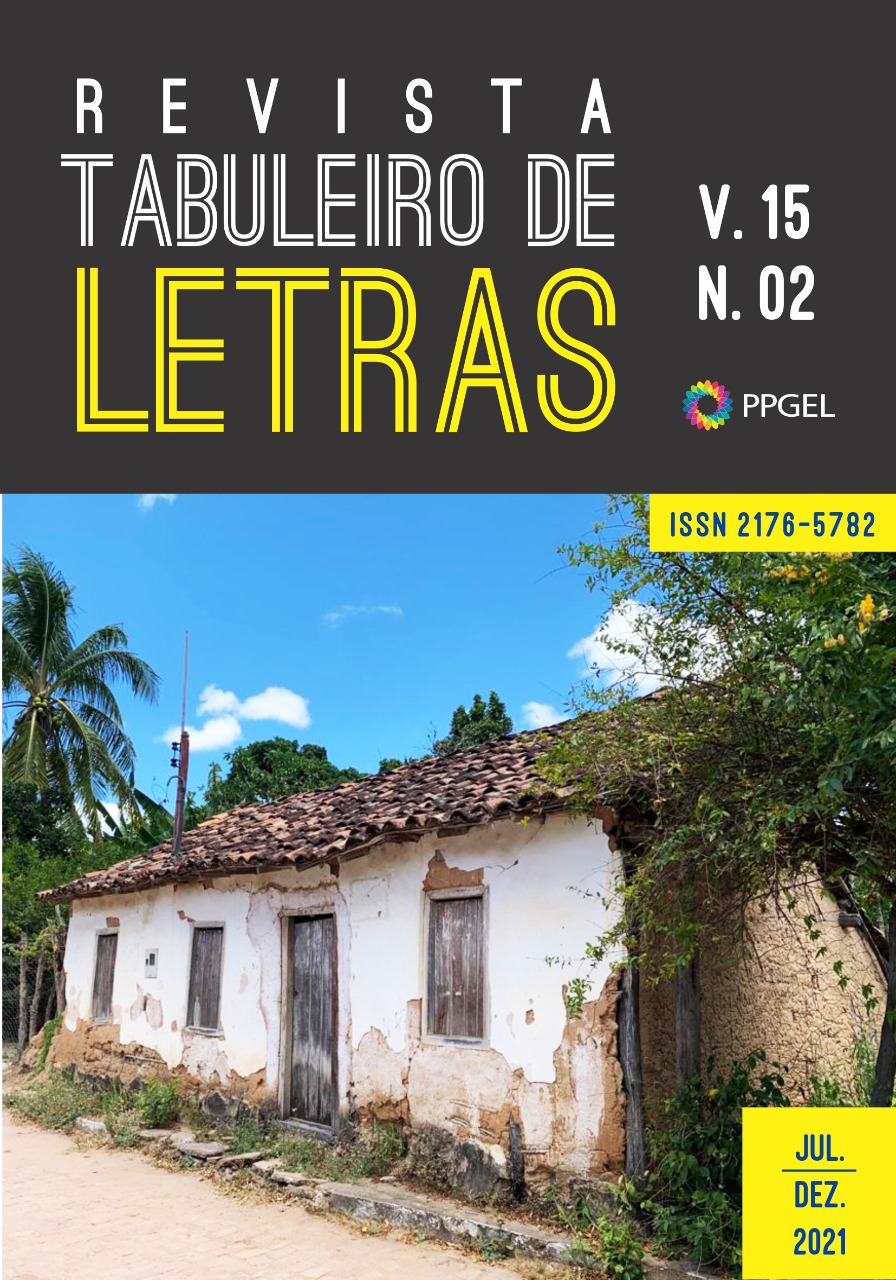Pausas preenchidas na fala espontânea de pacientes com esquizofrenia: comparação entre pacientes e não pacientes
DOI:
https://doi.org/10.35499/tl.v15i2.11889Abstract
The aim of this research is to make a comparison between frequency and length of filled pauses in schizophrenic spontaneous speech. We hypothesize that people with schizophrenia would make more filled pauses and with longer duration than non-schizophrenic people. Our methods consist in extracting filled pauses out of 6 audios transcriptions from C-ORAL-ESQ (FERRARI, ROCHA, in construction) and C-ORAL-BRASIL, data treatment and statistical analysis in Python language environment. The results show that schizophrenic patients made more filled pauses and with longer duration than non-schizophrenics – in the comparison across the whole subcorpora – and usually more pauses with longer duration when patients were compared individually. There are significant statistical results in the U Mann Whitney test (p <0, 05) regarding length of pauses. We claim that patients with schizophrenia appear to hesitate more than non-schizophrenics in spontaneous speech, although it may be necessary to take into account the context of each of 94 filled pauses found before claiming those as in fact disfluencies.
Downloads
References
ALPERT, Murray, CLARK, Aileen, POUGET, Enrique. The syntatic role of pauses in the speech of schizophrenic patients with alogia. Journal of Abnormal Psychology, vol. 103, n. 4, 1994, pp. 750-757.
ANDREASEN, N. C. Positive and negative symptoms in schizophrenia. A critical reappraisal. Archives of General Psychiatry 1990, vol. 47, pp. 615-621.
ANDREASEN, N. C., & Grove, W. M. Thought, language and communication in schizophrenia: Diagnosis and prognosis. Schizophrenia Bulletin, 12, 1986, pp. 356-359.
ANDREASEN, N. C. A scale for the assessment of thought, language and communication (TLC). Schizophrenia Bulletin, 12, 1986, pp. 473-482.
BIBER, D. Representativiness in Corpus Design. Literary and Linguistic Computing, Vol. 8, No. 4, 1993. Disponível em: http://otipl.philol.msu.ru/media/biber930.pdf
BLACK, D; GRANT, JON. The essential companion to the diagnostic and statistical manual of mental disorders. Fifth edition. Washington D.C; Londres; American Psychiatric Publishing, 2014.
BOER, J. N de et al. Language in schizophrenia: relation with diagnosis, symptomatology and white matter tracts. Revista Nature, v. 10, 2020, pp. 1-10.
BORTFELD, H et al. Disfluency Rates in Conversation: Effects of Age, Relationship, Topic, Role, and Gender. Language and Speech, n.44(2), 2001, pp. 123-147.
BUTTERWORTH, B.L. Evidence for pauses in speech. In: Butterworth, B.L. (ed) Language Production, 1, Speech and Talk. Londres, London Academic Press, 1980.
ÇOKAL, Derya, et al. Disturbing the rhythm of thought. Speech pausing patterns in schizophrenia, with and without formal thought disorder. PLOS ONE, n. 14 (5), 2019, pp. 1-14.
COMPTON, M.; LUNDEN, A.; CLEARY, S. et al. The aprosody of schizophrenia: Computationally derived acoustic phonetic underpinnings of monotone speech. Schizophrenia Research, n. 197, 2018, pp. 392–399.
CONDRAY, R.; STEINHAUER, S. R.; VAN KAMMEN, D.P.; KASPAREK, A. The language system in schizophrenia: Effects on capacity and linguistic structure. Schizophrenia Bulletin, 28, 2002, pp. 475-490.
COVINGTON, M. A. et al. (2005). Schizophrenia and the structure of language: The linguist's view. Schizophrenia Research, 77, 85-98.
ESPOSITO, Anna et al. The significance of empty speech pauses : cognitive and algorithmic issues. The Significance of Empty Speech Pauses: Cognitive and Algorithmic Issues. In: Mele F., Ramella G., Santillo S., Ventriglia F. (eds) Advances in Brain, Vision, and Artificial Intelligence. BVAI 2007. Lecture Notes in Computer Science, vol 4729. Springer, Berlin, Heidelberg, 2007, pp. 542-554.
FELDSTEIN, S, JAFFE, J. Schizophrenic speech fluency : a partial replication and a hypothesis. Psychological Reports, n.13, 1963, pp-775-780.
LIDDLE, P. F., NGAN, E. T. C., CAISSIE, S.L. et al. Thought and language index: An instrument for assessing thought and language in schizophrenia. British Journal of Psychiatry, n. 181, 2002, pp. 326-330.
LIN, Y, DING, H, ZHANG, Y. Emotional prosody processing in schizophrenic patients: a selective review and meta-analysis. Journal of Clinical Medicine, n.7, 363, pp.1-26.
MATSUMOTO, K. et al. Frequency and neural correlates of pauses in patients with formal thought disorder. Frontiers in Psychiatry, 2013, vol. 4, article 127, pp. 1-9.
MORICE, R. D., & Ingram, J. C. L. Language complexity and age of onset of schizophrenia. Psychiatry Research, 9, 1983, pp. 233-242,
KUPERBERG, G. Language in Schizophrenia. Part 1: An Introduction. Language and Linguistics Compass n.4, vol.8, 2010, pp. 576–589.
O’CONNEL, Daniel C., KOWAL, Sabine. Pausology. Computers in Language Research 2. Walter de Gruyter e CO, Berlim; Nova Iorque, 1983.
OGATA, J., GOTO, M., ITOU, K. The use of acoustically detected filled and silent pauses in spontaneous speech recognition. ICASSP 2009 : IEEE International Conference on Acoustics, Speech and Signal Processing. Anais, pp. 4305-4308.
RASO, T.; MELLO, H. (Eds.). C-ORAL-BRASIL I: Corpus de referência do português brasileiro falado informal. 1. ed. Belo Horizonte: Editora UFMG, 2012.
ROCHA, B.N. O corpus C-ORAL-ESQ e a estrutura informacional da fala de pacientes com esquizofrenia. Working papers em Linguística, 20 (1), pp. 212-238.
STEUBER, L.C. Disordered Thought, Disordered Language: A corpus-based description of the speech of individuals undergoing treatment for schizophrenia (2011). Dissertations and Theses. Paper 63.
Downloads
Published
How to Cite
Issue
Section
License
Autor(es) conservam os direitos de autor e concedem à Revista o direito de primeira publicação, com o trabalho simultaneamente licenciado sob a Licença Creative Commons Attribution que permite a partilha do trabalho com reconhecimento da autoria e publicação inicial nesta Revista.

















